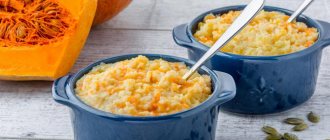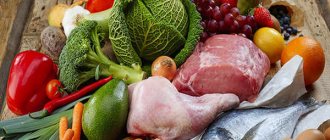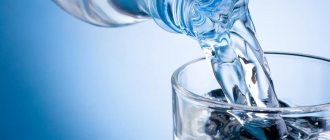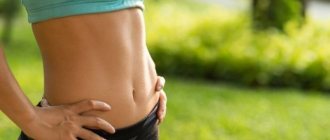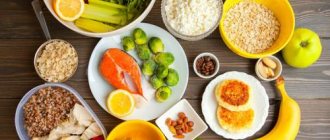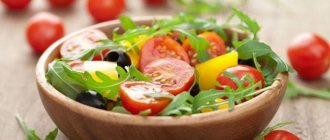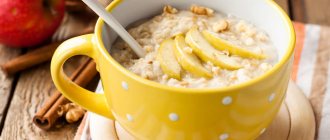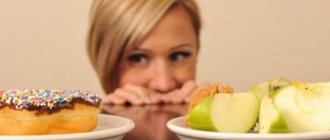Spring completely changes a person - starting from the winter solstice, more light and solar energy begins to reach the Earth. During this period, a person must free himself from the weight accumulated over the winter - both weight and toxins. We are well adapted to such changes - if everything is in order with our health, they happen unnoticed. If something is wrong, the course of biochemical processes is hampered, and we get all the “delights” of a mesenchymal block and oxidative stress. Therefore, the change of season must be taken into account. First of all, pay attention to your diet. Dermatovenerologist and cosmetologist Vasily Firsov tells how he will do this.
What does this mean and how to eat properly

Healthy eating means eating a balanced diet consisting of healthy ingredients. When answering the question of what it is - proper (healthy, rational) nutrition, be sure to note that it is not only specific food, but a conscious choice and lifestyle.
When talking about the PP diet, we cannot ignore three aspects:
- Fasting is not allowed.
- Rational consumption of products.
- Availability of choice (variability).
The basic rules of rational nutrition are the norms of how you should eat in order to be healthy, and what your daily menu should be to keep yourself and your figure in shape.
Be sure to look: Rules and recipes for a menu for healthy eating Rules for compiling and an approximate menu for a week as part of proper nutrition The meaning and rules for drawing up a regime for healthy eating for a healthy person We create a menu for older people correctly: we take into account the characteristics of the body at 60 and 80 years old
Organizing healthy nutrition
If at home you can organize your diet in accordance with the principles and fundamentals of rational nutrition, then outside the home, organizing rational nutrition may encounter certain difficulties. This is due to the fact that most catering establishments use mayonnaise, preservatives, not the highest quality products, flavoring additives - such food can satisfy your hunger, but most likely will not benefit you. If you have the opportunity to take home-cooked food with you to work or school, use it. If this is not possible, use our tips for organizing healthy meals outside the home.
In the supermarket you can buy fruits, vegetables, whole grain bread and dairy products (kefir, yogurt).
Nowadays there are many eco-cafes, vegetarian cafes, and some establishments will offer you a diet menu. Many establishments have a Lenten menu - during the corresponding fast, choose dishes from it.
On vacation, choose restaurants with homemade, traditional cuisine for the area. In warm countries, try to eat as much fruit as possible; in seaside resorts, seafood. Avoid unfamiliar foods. If you are not satisfied with the breakfast at your hotel, do not skimp on your health, have breakfast in a good cafe.
Physiological foundations, principles, basic rules of healthy and rational eating
- Fractional - portioned food. The human body needs nutritious breakfasts, lunches and dinners. To avoid annoying feelings of hunger, two light snacks are acceptable.
- Proper breakfast. Breakfast should not be neglected: in the morning the maximum metabolic rate occurs.
- Vegetables and fruits are friends for every day. They are rich in vitamins, microelements and fiber. Therefore, they perfectly saturate and help the intestines work. In the spring, when there are few of them, it is worth compensating for this factor with vitamin complexes.
- If meat, then lean veal and poultry fillet. You should consider the serving size and method of preparation. It is wise to eat meat for lunch, combining it with vegetables.
- Fermented milk products for every day. All low-fat fermented milk products should be present during PN.
- Her Majesty is water. With proper nutrition, you need to drink water: it speeds up metabolism, cleanses the intestines and makes the skin elastic: drink 250 ml of warm water immediately after waking up.
- Sugar and salt are enemies. With sugar, an excess of glucose enters the blood, which leads to a false feeling of an empty stomach and, accordingly, to the threat of overeating. Excess salt leads to swelling.
The relevance and importance of PP is that the system, even without diets and physical exercise, is able to maintain excellent health and condition of the body. And if you choose the right products and create a suitable menu, you can gradually lose excess weight and achieve an ideal figure. And it will be easy to maintain it provided you eat the right food.
How does it affect human health?

At PP, amazing changes begin to occur in the body: not only health improves, but also a person’s appearance.
At first, when switching to PP, a loss of strength is possible. This means that the body is being rebuilt, mobilizing all its resources to cleanse the internal organs. Such a restructuring is perceived by brain cells, in fact, as weakness.
With PP, especially at the initial stage, you should reduce energy consumption and get more rest. Then the body starts the recovery process, which usually makes itself felt:
- weakness and drowsiness;
- headache;
- fever and cold;
- skin rashes;
- diarrhea;
- irritability.
Important! The main thing is not to stop PP, taking into account the cyclical nature of the body’s work. Day by day your health will improve significantly. Complete restructuring of the body as a result of PN occurs in 1.5-2 months.
Proper nutrition provides a person with the necessary animal proteins and polyunsaturated fatty acids, contributing to:
- Qualitative growth.
- Improving mental development.
- No fatigue.
- Lack of sleepiness.
- A noticeable improvement in the condition of the skin, nails, teeth and hair.
- Normalization of the gastrointestinal tract.
- Lack of depression and irritability.
- The appearance of lightness and activity.
- Improved mood.
Features of a balanced diet

What is healthy food?
A balanced diet does not require much effort and has no restrictions, unlike many diets.
The main thing in such a diet is adherence to the regime and daily consumption of nutritious foods.
Features of a balanced diet include adherence to a number of principles:
| Principle | Definition |
| Energy consumption | Daily energy costs must be compensated by the energy value of the products. |
| Mode |
|
| Diversity | A wide range of food in different culinary preparations. |
| Harmlessness | Consumption of fresh and organic products. |
| Compatibility | Proper consumption of fats, carbohydrates and proteins. |
| Organolepticity | The appearance of food, its consistency, taste, color and temperature: these indicators affect appetite and digestibility of food. |
A balanced diet should include:
- lean meat;
- sea fish fillet;
- vegetables, greens;
- fruit and berry crops;
- nuts;
- dairy products without fat;
- whole grain bread products;
- durum wheat pasta;
- porridge and various bran;
- maintaining water balance.
Important information! Carbohydrates should be consumed before lunch, followed by proteins at the end of the day. The daily norm is 1200-2000 kcal, while 45% of these calories should be consumed in the first half of the day.
For men

The strong half of humanity needs control over their diet. This mainly applies to men who have celebrated their fortieth birthday.
We offer a list of requirements for the male diet:
- increase consumption of complex carbohydrates;
- maintain the fat limit;
- get enough protein;
- eat a lot of fiber.
Important! Often in men, especially after 40 years, hormonal imbalance occurs: testosterone levels decrease, memory deteriorates, and nervousness increases. To avoid this, you need to eat foods with zinc.
For pregnant and nursing mothers

A rational PP system depends on the availability of:
- Energy value of food.
- Balanced diet.
- Rich in vitamins and microelements.
Nutrition during pregnancy is related to the physiology of fetal development. It differs depending on the term and correlates with trimesters:
- In the first trimester, when the baby is developing, you need to eat four times a day, but in small doses. The daily norm is 2500 kcal.
- The period of the second and third trimester is the time when the baby has already formed and is growing, increasing in weight. Six meals a day are required, but in small doses.
- When breastfeeding, a woman should consume daily: 150 g of protein, 100 g of fat and 500 g of carbohydrates. The daily amount of food for a nursing woman is 3500 kcal. You need to eat small meals, up to 6 times a day. It is best to eat before you start feeding your baby.
For children

Balanced nutrition for children is:
- Consuming the nutrients your growing body needs.
- Strict diet.
- Age-related approach to nutrition.
When drawing up a PP menu for a child, you need to consider the following:
- When a child is active and athletic, his daily calories should be 2400 kcal.
- At the age of 7 to 10 years, a child is required to receive 2000 kcal per day.
- Dress salads only with vegetable oil.
- Meat, fish and fruits are required in the diet.
- Breakfast with foods containing calcium.
- Exclude processed meat products.
- Eliminate soda and fast food.
Important! The child must have energy for growth and development. Therefore, children need more nutrients than adults.
When losing weight

The main advantages of PP are that if you follow it, the lost weight never returns. That's why to use this particular technique!
When losing weight, you must follow the following principles of balanced nutrition:
- Limit your sugar intake.
- Limit salt intake.
- Replace wheat bread with grain bread.
- Replace animal fats with vegetable fats.
- Eat food according to the schedule, often and in small portions.
- Strictly limit alcohol to a glass of red wine per week.
- Consume 2 liters of clean water daily.
- Be sure to have a carbohydrate-rich breakfast.
- Make food as varied as possible.
- Do not starve so that the body does not experience stress.
- Eat plenty of fruits and vegetables.
- Be sure to eat citruses and pineapples, which burn fat.
When building muscle
To increase muscle tissue, sports trainers advise:
- A lot of energy for the body contained in carbohydrates.
- There are many building materials for the body contained in proteins.
Attention! You can ensure stable muscle growth by consuming about 2 g of protein per kilogram of weight daily.
Principles
Rational human nutrition is based on three basic principles.
Energy value. To maintain vital functions, it is not the amount of food eaten that is important, but the amount of energy received.
The body should receive exactly as many calories as it requires for its smooth functioning.
Deficiency leads to weakness, weakness, apathy, and irritability. Reduces labor productivity, sexual activity, and leads to loss of strength. Quite often this phenomenon is observed when following a strict diet.
Excess is also dangerous - all unspent energy is stored in reserve in the form of fat deposits. This leads to obesity, arterial hypertension, diabetes, osteoporosis, and pathologies of the musculoskeletal system. Regular excess of calories threatens serious health problems, reproductive dysfunction, the formation of complexes, and social isolation.
The second important point is balance. Food is a supplier of vitamins, enzymes, micro- and macroelements. Only a variety of diets will allow you to get the full range of important substances. The exclusion or deficiency of at least one element leads to pathological processes.
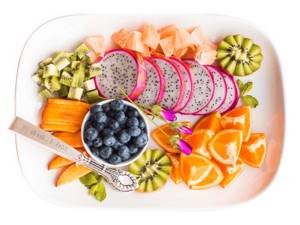
The third principle is regime. You need to eat according to a certain schedule. Consider the basic points, but adjust the regime as much as possible to suit yourself, taking into account your professional activities and daily routine:
- eat 3-5 times a day in small portions for complete digestion and absorption of food, prevention of flatulence, stool disorders and other gastrointestinal pathologies. This will avoid severe hunger, which will reduce the risk of breakdown and eating harmful things;
- adherence to the regime - meals should occur at approximately the same time every day. The organs of the gastrointestinal tract adapt to this routine and during this period enzymes are produced that stimulate the digestion process;
- the first meal is as nutritious and high-calorie as possible, and the last meal is taken no later than 18.00 and should be very low-calorie;
- Do not drink water directly during meals, less than half an hour before or after. This can negatively affect the digestion process.
Table of healthy and harmful foods
What should be included in a healthy diet and what should not be there? Here is a table of the TOP 10 healthy and unhealthy foods:
| 10 harmful foods | 10 useful products |
| Sweets and baked goods | Cauliflower and broccoli (lots of zinc, magnesium, iodine). Reduces the risk of prostate cancer by 50%. |
| Animal fats | Tomatoes (have cholesterol-lowering lycopene, vitamins, potassium and fiber). |
| Fatty dairy foods | Kiwi (one kiwi per day = daily requirement of vitamin C). Lots of magnesium and potassium. |
| Sugary soda and chips (carcinogens and hydrogenated fats that contribute to cancer) | Blueberries (phytonutrients and antioxidants that protect against cancer). |
| Fast food (food full of carcinogens) | Raisins (nutrition for the heart). |
| Margarine (transgenic fat) and white baked goods | Black beans (protein and zero saturated fat). |
| Smoked meats | Cranberry (strengthens gums, normalizes pressure, protects against infections). |
| Processed meat products | Salmon (Omega-3, high in selenium and B vitamins). |
| Mayonnaise | White cabbage (fiber and vitamin C). Reduces the risk of strokes. |
| Industrial products with preservatives | Meat (essential amino acids). Eggs (protein, vitamins, rich mineral composition). |
Keep this table for yourself so that you always have a list of what you can and cannot eat at hand.
Calorie content
To determine the calorie content of food you need, experts have developed a table for 5 labor groups.
| Group | Professions | Daily norm, kcal |
| 1 | Workers engaged in mental work - managers, engineers, medical personnel, except for surgeons, orderlies and nurses, teachers and educators. | 2500 – 2800 |
| 2 | Workers who do light physical labor - watchmakers and radio electronics workers, agronomists, service workers, nurses and orderlies. | 2700 – 3000 |
| 3 | Workers who are engaged in medium-duty physical labor - mechanics, turners, drivers, chemists, foreman, salesmen, railway workers. | 2900 – 3200 |
| 4 | Workers who engage in heavy physical labor - machine operators, rural workers, oil and gas workers, carpenters, metallurgists. | 3300 – 3700 |
| 5 | Workers who are engaged in physical labor with a particularly heavy load - miner, mason, logger, steelmaker, laborer. | 3900 – 4300 |
Important! The first 3 groups are divided into 3 age groups (under 18 years old, 18 - 40, 40 and older), and each of them has its own diet. Children and people over 40 years of age can eat up to the lower daily limit, the middle subgroup can eat the maximum limit.
Organization of the diet and approximate menu for the week

When the body has enough nutrients, it functions without failures. Therefore, creating a PP menu for seven days is very rational.
It will be even better if you consult a nutritionist: he will develop a program and a healthy menu based on individual indicators of the body’s condition.
Here is an example of a menu on the PP, which includes healthy products without taking into account their weight at the rate of 1 serving = 250 ml:
| Day of the week | Menu |
| Monday | We have breakfast:
Lunch: buckwheat porridge with steamed chicken cutlet, green tea and orange. Afternoon snack: a handful of raisins and nuts. Dinner: drinking fermented milk product, boiled chicken breast with fresh cucumbers. |
| Tuesday | We have breakfast:
Lunch: vegetable soup, pasta with grated cheese, 1 tomato. Afternoon snack: green tea with a cereal bar. Dinner: steamed fish with stewed cabbage. |
| Wednesday | We have breakfast:
Lunch: boiled rice with stewed turkey, two pieces of low-fat cheese and one grapefruit. Afternoon snack: one cereal bar. Dinner: stewed fish with vegetables. |
| Thursday | We have breakfast:
Lunch: Mexican mixture of peas, corn and beans, with rice and stewed rabbit. Afternoon snack: dried fruit compote and one orange. Dinner: a couple of slices of cheese, stewed vegetables with turkey meat. |
| Friday | We have breakfast:
Lunch: chicken broth, steamed vegetable saute and breast. Afternoon snack: matsoni. Dinner: vegetable salad with herbs, boiled rice with steamed veal cutlet. |
| Saturday | We have breakfast:
Lunch: spaghetti with seafood, turkey soup and berry jelly. Afternoon snack: dried fruit compote. Dinner: a handful of nuts, kefir and a cereal bar. |
| Sunday | We have breakfast:
Lunch: buckwheat porridge with a piece of veal. Afternoon snack: homemade fruit jelly. Dinner: salmon baked in foil and salad of cucumbers, tomatoes and herbs. |
Tips and secrets from experts in the field of proper nutrition

Ksenia Drozhzhina, experienced healthy diet specialist, sports instructor
Ksenia asks not to forget that it is useful to have a basic understanding of gynecology, endocrinology and psychology. After all, our desire to “eat” is a psychological problem.
Ksenia Drozhzhina advises you to imagine what you can look like if you eat right and visualize this beautiful image.
Dr. Michael Greger, American nutritionist, scientist and scientific author
Dr. Greger released a CD with the intriguing title “Eat More to Weigh Less,” where he talked about how this principle fits perfectly with a healthy lifestyle.
The doctor pays attention to foods with high calorie content: nuts, tofu, avocados, dried fruits and others. He recommends including them in small doses in your meals. Greger prefers steamed rather than raw foods.
Dr. Komarovsky, a well-known pediatrician and advocate of healthy eating
Dr. Komarovsky offers his principles of healthy eating. The recommendations of a famous doctor are as follows:
- How much we eat: we need to eat in moderation, without overeating.
- What we eat: we only need to eat fresh food.
- Possibility of choice: you need to eat a variety of foods.
- The principle of the “food plate”: all food should be divided into four parts. A quarter of the “plate” is cereals, a quarter is proteins, the remaining two thirds are vegetables and fruits.
- Long live water! Drink only clean water, not teas and drinks.
Interesting information! Most nitrates are found in the hard part of vegetables and fruits. In cabbage it is the stalk, in cucumber it is the skin, in parsley it is the stems.
Menu
To create a menu, strictly follow all rules and regulations. By adhering to them, you can create a varied, balanced and tasty diet:
- Breakfast is the most dense and high-calorie meal, which includes carbohydrates (including fast ones). An omelet would be an ideal option; berries with cottage cheese or porridge. You can supplement your meal with coffee or tea without sugar.
- Snack – yogurt, vegetables or juices.
- A complete lunch includes proteins, carbohydrates and fiber. Eat vegetable soup, baked or boiled fish, meat, salad, and whole grain bread.
- For dinner, protein and fiber are a great combination. Eat steak with vegetables, steamed fish, salads dressed with lemon juice or olive oil. Avoid high-carbohydrate foods.
Consider your body type. Asthenics require more calories, so they are recommended to eat fruits, fish, cottage cheese, kefir, yogurt without additives, and grains.
People with a hypersthenic build should give preference to light foods - cereals, vegetables, legumes, chicken and turkey. This is due to a slow metabolism and a tendency to accumulate fat. Normosthenics are the golden mean and the main recommendation is balance and variety.
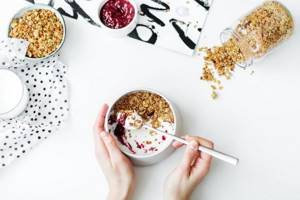
Compliance with the basic provisions at home does not cause difficulties. Here you are able to create your own menu, choose the best ingredients, cook correctly, monitor calories and nutritional supplements. However, when visiting public catering or going on a visit, certain difficulties may arise. The solution may be to carry your own provisions with you or choose from a menu in a restaurant dishes that meet the above requirements.
